Leaving Istanbul, we took a short flight to Izmir and then rented a car to begin our road trip. The first stop was Ephesus, about an hour south of Izmir. Ephesus is one of the largest archaeological sites in the world and is a must-see in Turkey. The scope and quality of the ruins found here rivals Pompeii and Carthage.
Ephesus
The city was settled around 1000 BCE, went through many different periods and peoples, and reached its peak under Roman rule between 200-100 BCE. Its population at that time is estimated at between 150,000 – 200,00 people, making it one of the largest cities of its time anywhere.
The Temple of Artemis, one of the seven wonders of the ancient world, once stood here, though there is no trace of it left today. Among the things you can see, though, is the impressive Library of Celsus, which once held 4,000 scrolls, and the world’s largest ancient amphitheater, which could hold 24,000 spectators.
One area we were particularly impressed with is a complex of 7 houses that belonged to wealthy residents of the city. As they are slowly unearthed, it has revealed a huge trove of incredibly well preserved mosaics and frescoes that made up the walls and floors of these homes.
Ephesus was always an important place for all the different peoples that lived there. Through the centuries, residents and visitors included Alexander the Great, Pliny the Elder, John the Baptist, and Marc Antony and Cleopatra.
The city was destroyed by the Goths in 263 CE and largely abandoned after that, as the harbor was continually silting up from nearby river flows. Nearby is a house believed to be the final home of the Virgin Mary, who settled there under the protection of John the Baptist.
Pamukkale
Another three hours further southeast from Ephesus, we visited Pamukkale, a strange and beautiful natural sight. Pamukkale, which means “cotton castle” in Turkish, is an area with many hot mineral springs. The spring water is supersaturated with calcium carbonate. When the water reaches the surface, a gel of calcium carbonate coats everything along the water’s path. This gel then hardens into travertine, a beautiful white marble.
Hundreds of acres of hillside are now covered in travertine terraced pools, making a magical and surreal landscape. From a distance, you’d swear you were about to step onto a glacier. It’s quite a surprise, then, when you first touch smooth marble covered by warm water.
Thousands of tourists visit Pamukkale every day, most by bus from Ephesus and Kuşadasi. The best way to experience Pamukkale is early in the morning, before the majority of tour busses arrive. You can then have this amazing world of terraces and pools mostly to yourself.
Related Posts
Sorry, the comment form is closed at this time.

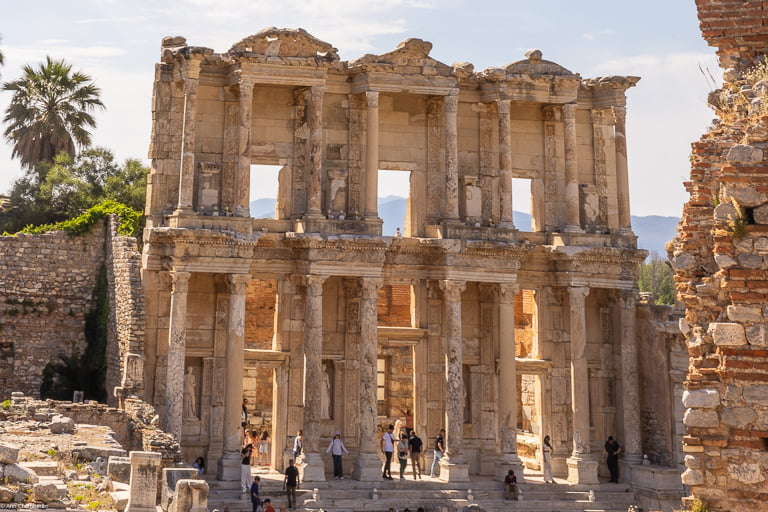
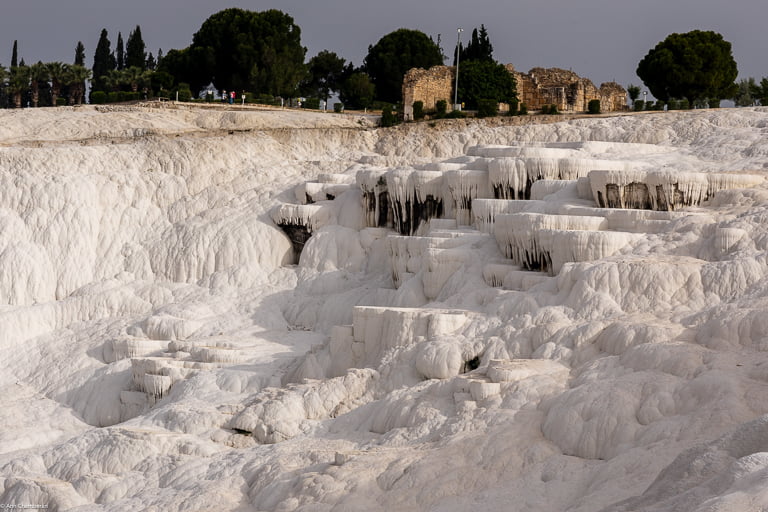
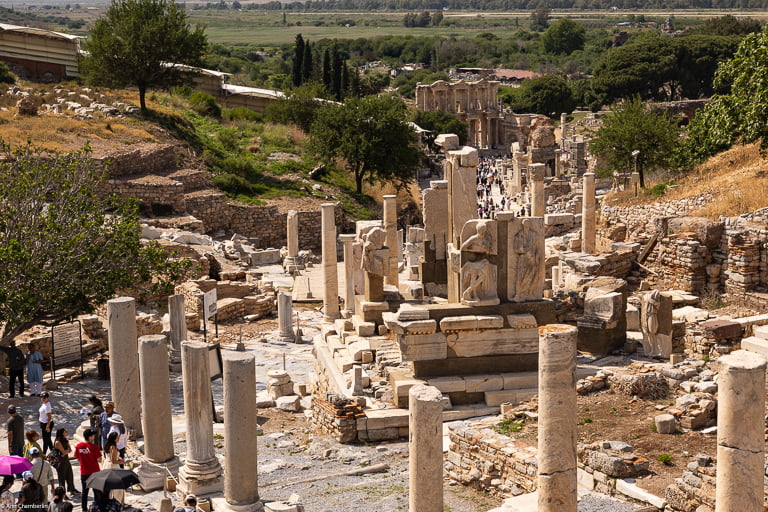
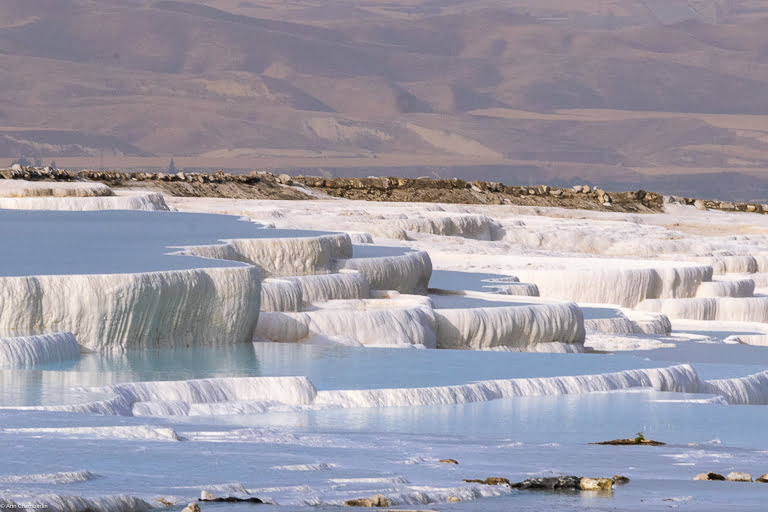
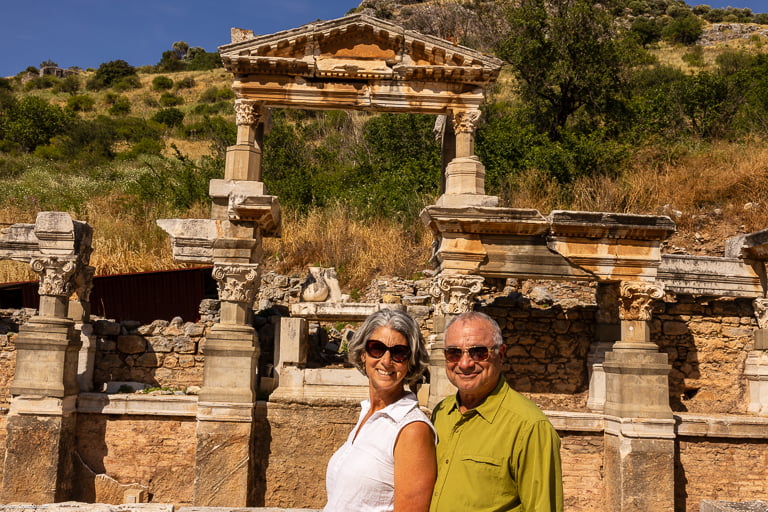
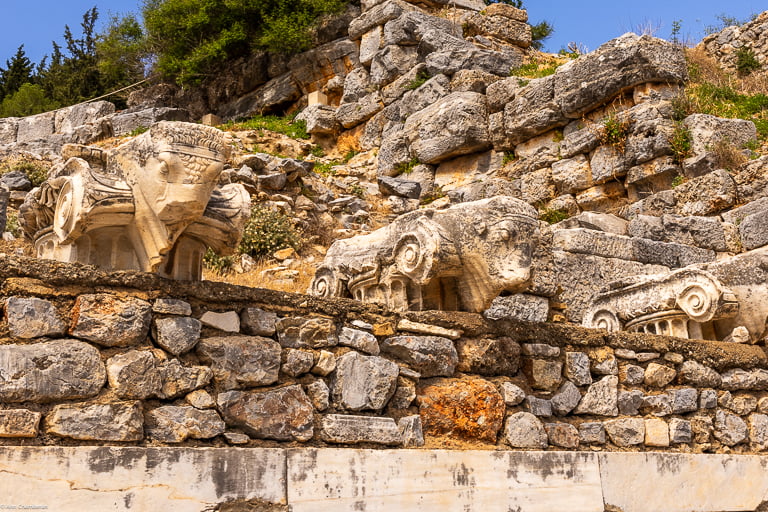
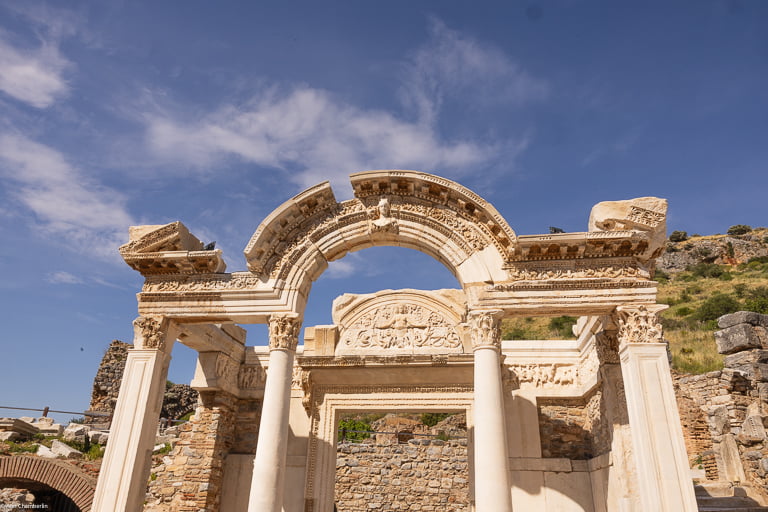
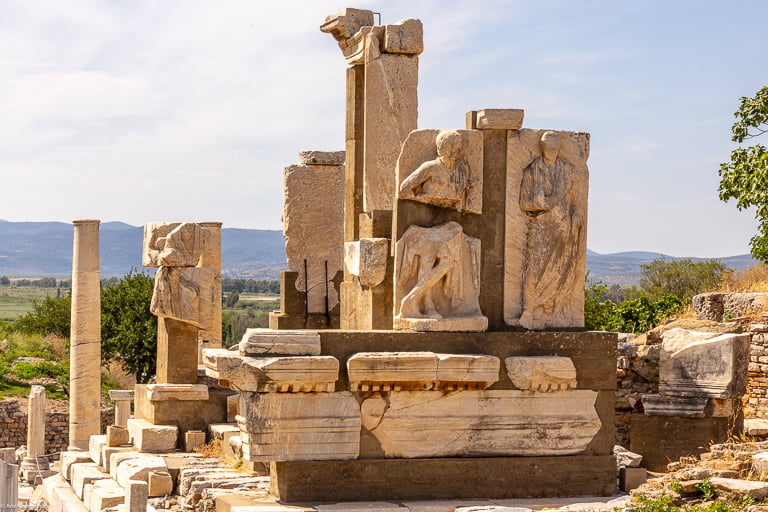
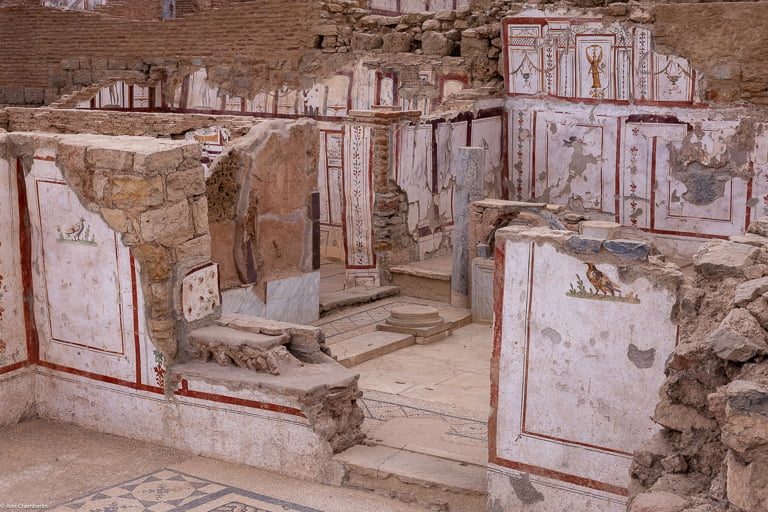
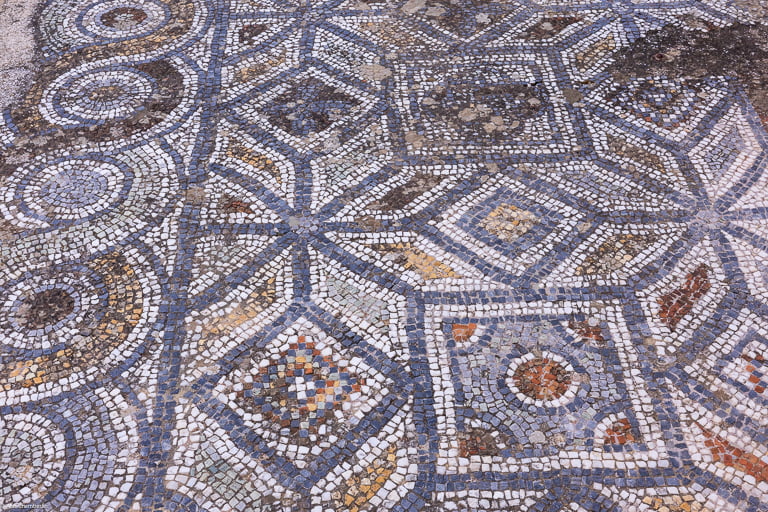
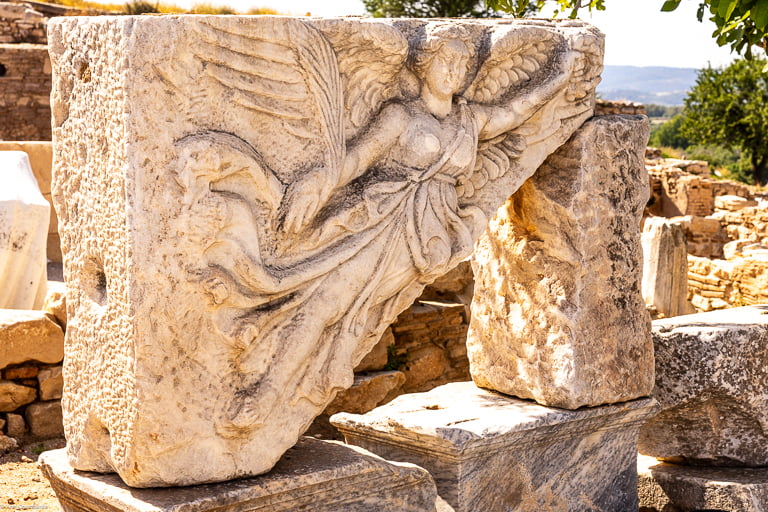
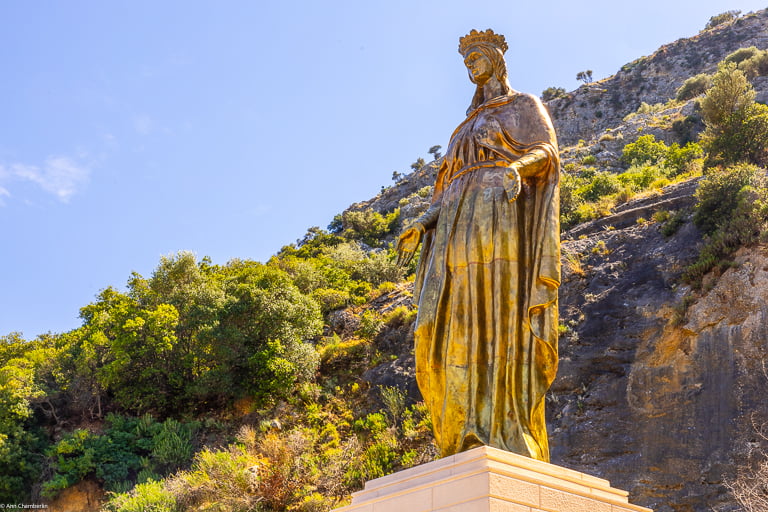
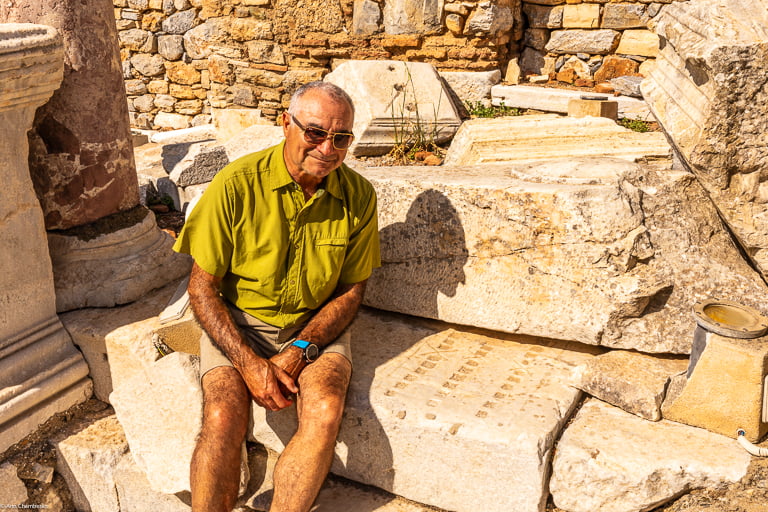
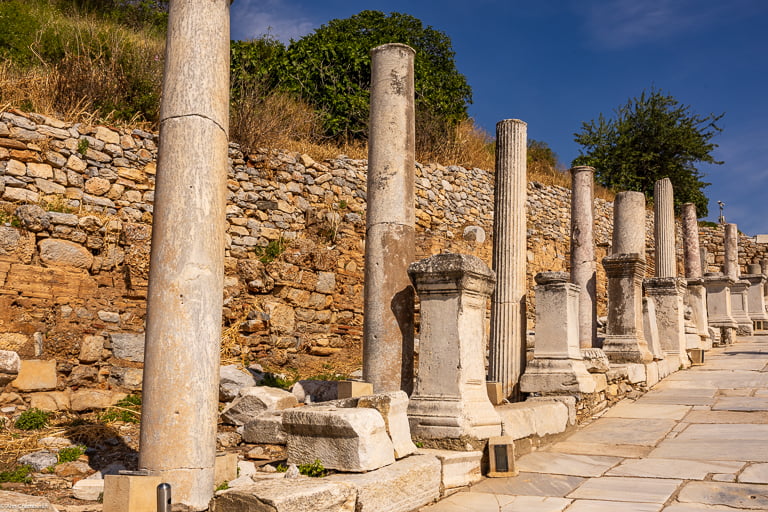
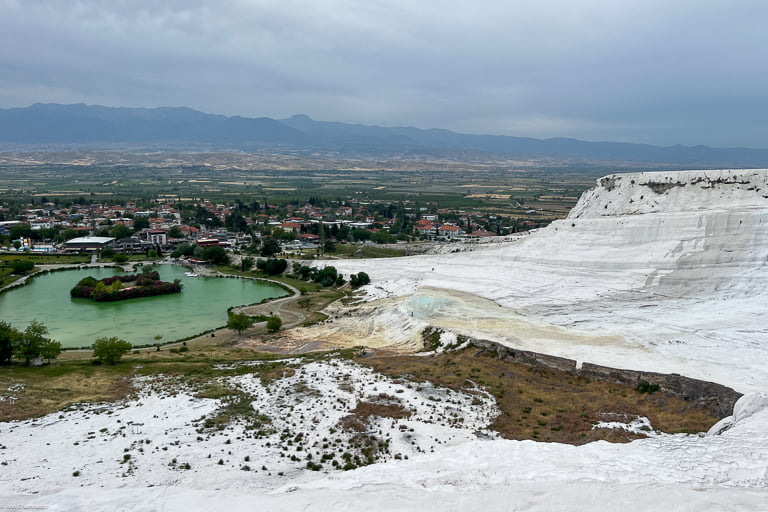
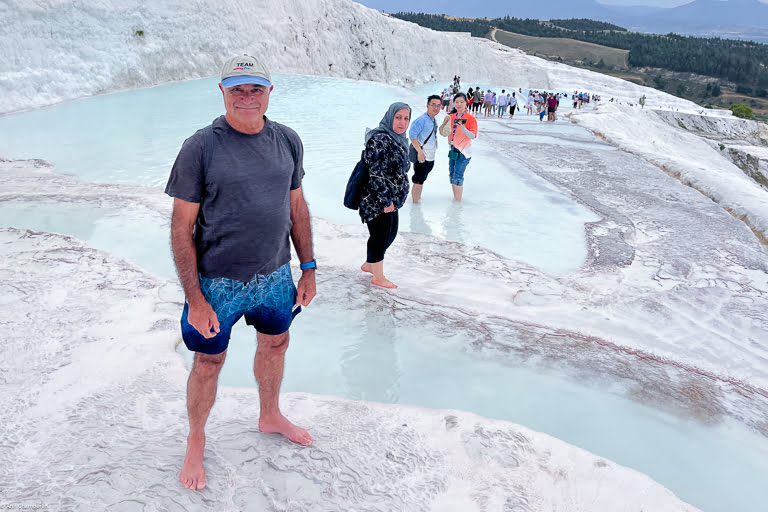
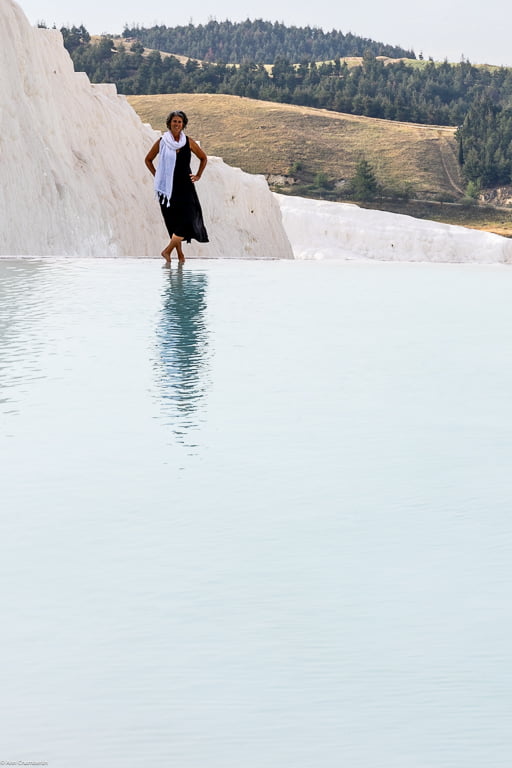
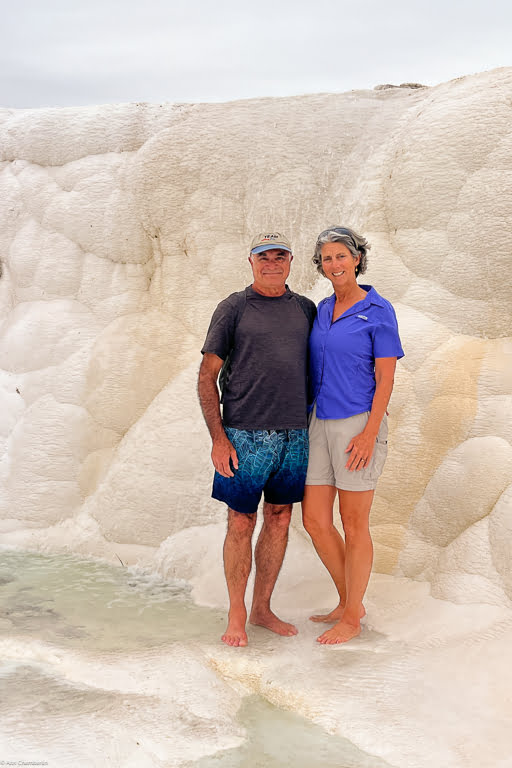
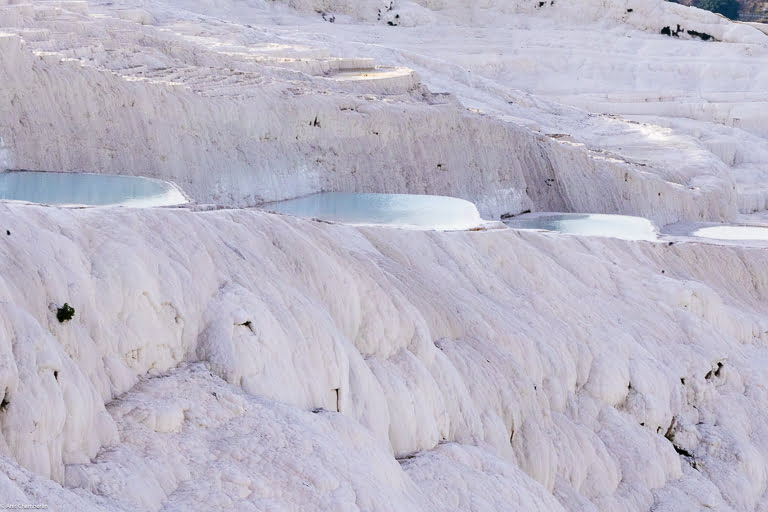
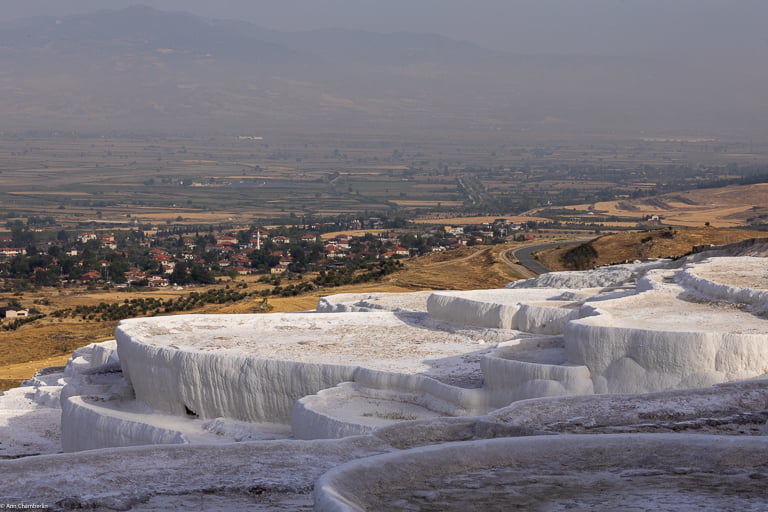
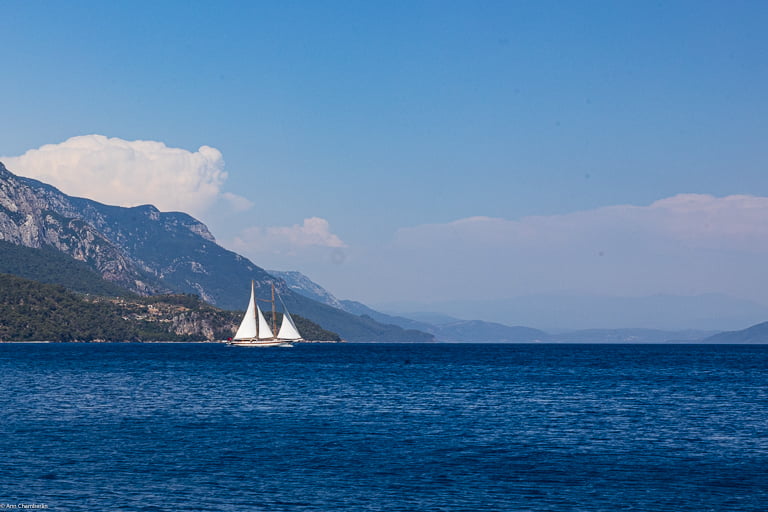
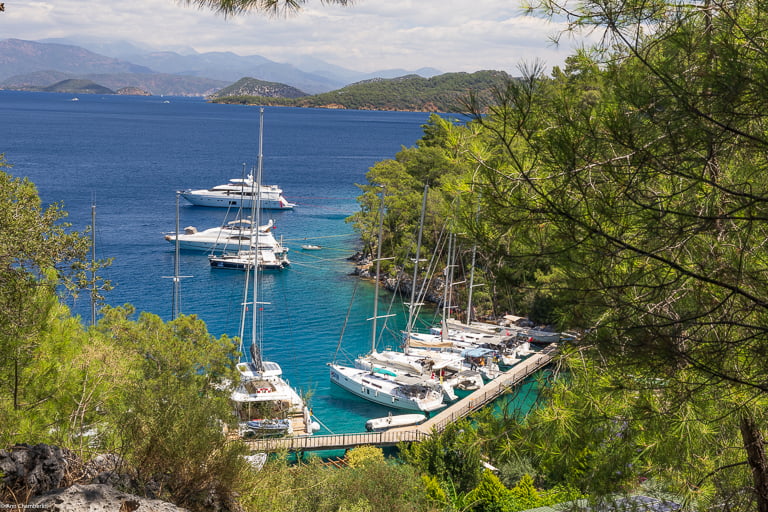

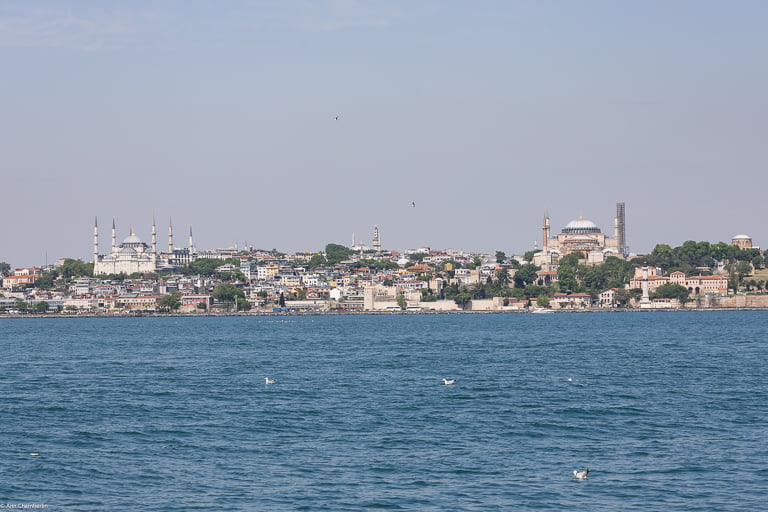
gail
I was so impressed with ephesus when we were there – it looks as if the archaeologists have been very busy since then – it must have ben about 1990.
Sara revah
I was 13 when I visited Ephesus. You of course didn’t want to go on that trip! Remember? I remember it very well
user-496059
awesome